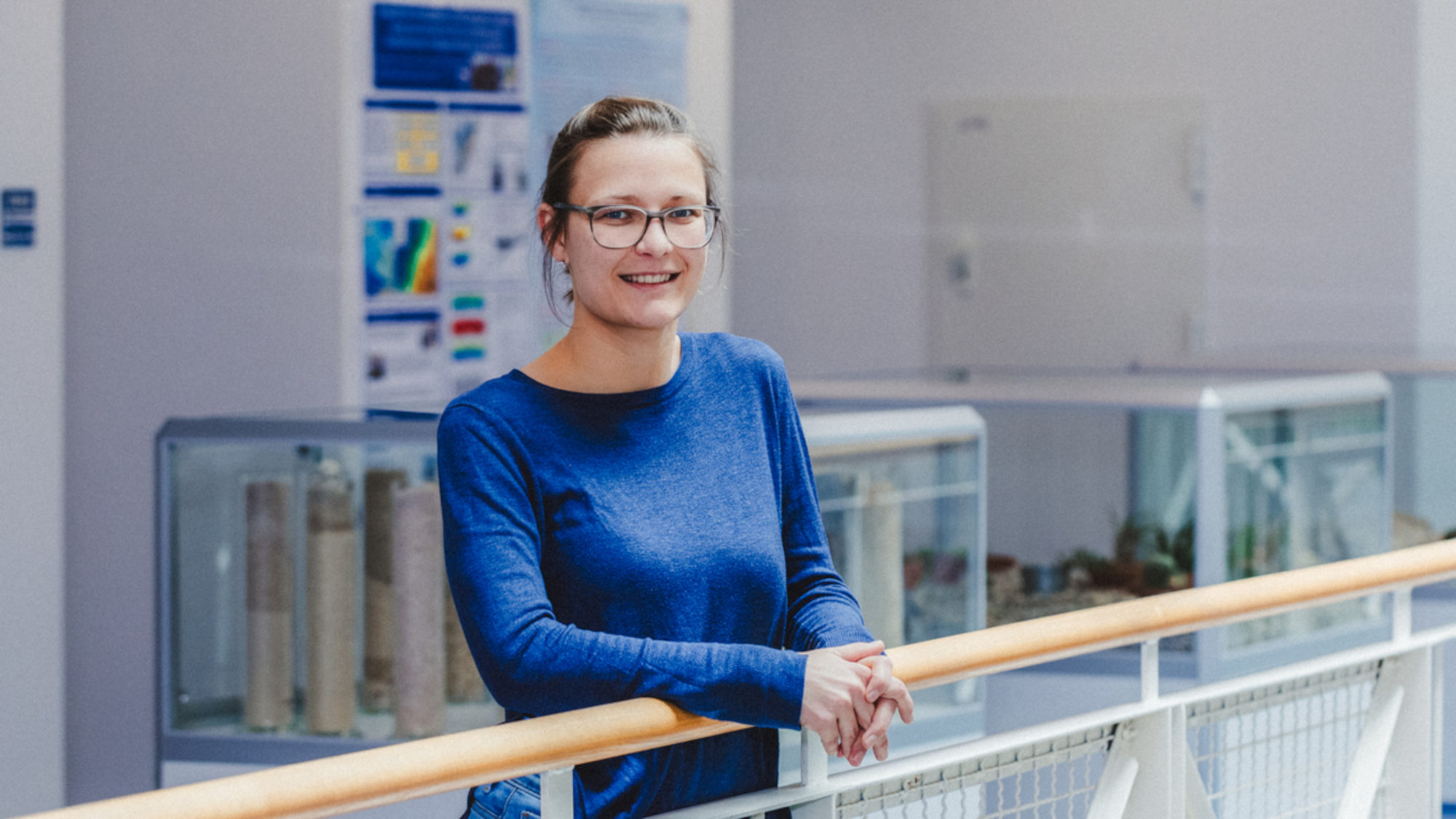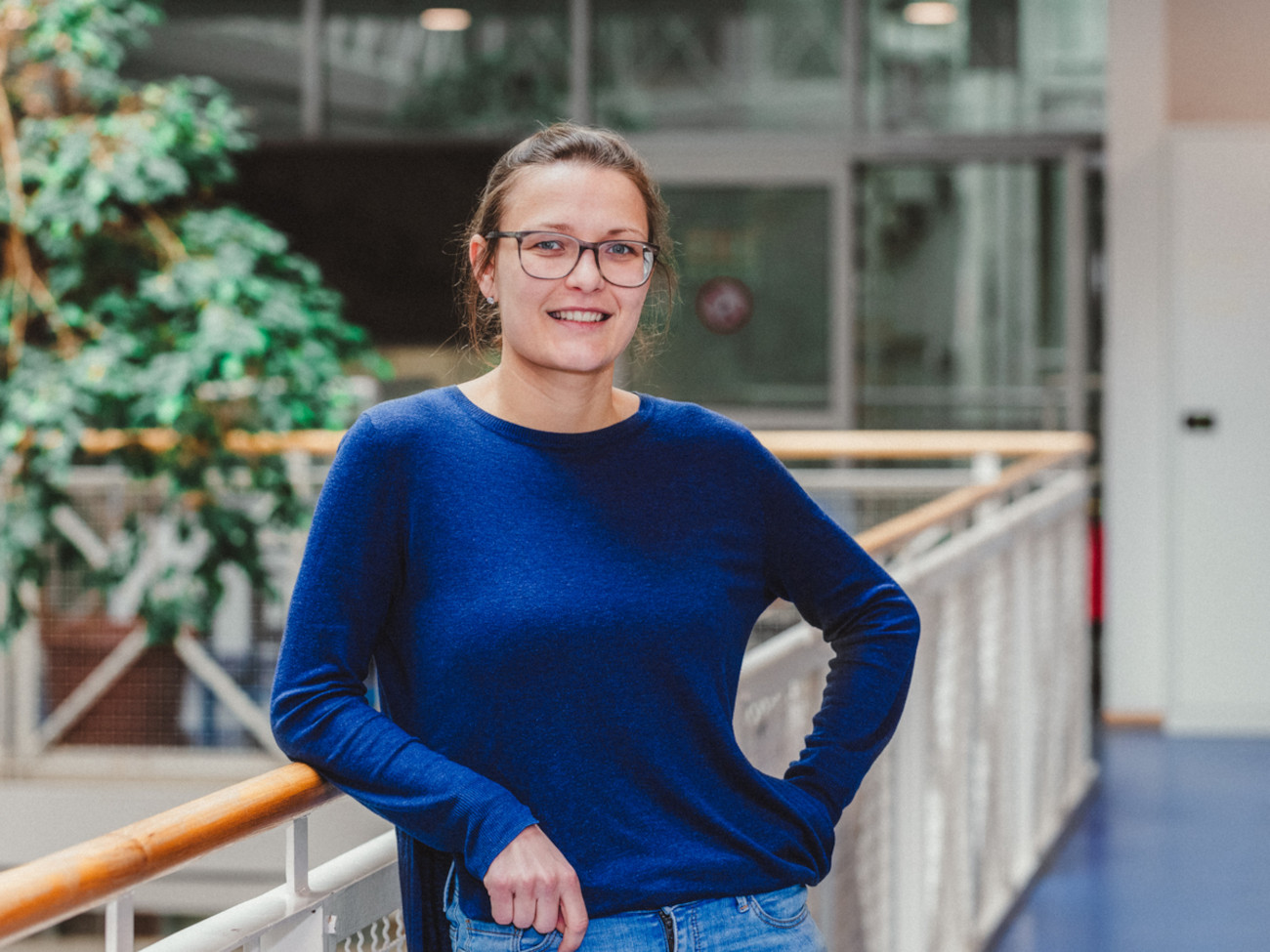
© Matej Meza / Universität Bremen
Crystals Are Her Passion: Ella Schmidt
The junior professor moved from southern Germany to Bremen after a stint in Oxford
Ella Schmidt has held the role of Assistant Professor of Crystallography and Geomaterials Research within the Faculty of Geosciences since February 2022. The 32-year-old from southern Germany is researching how the arrangement of atoms influences the properties of materials. up2date. provides an introduction.
Visiting Ella Schmidt. The cheerful assistant professor sits in her office in the Geosciences building and is quite stressed, which you hardly notice. She is on the go, having just come back from Grenoble before continuing on to a conference in Switzerland the following week. “Yes, I get around a lot,” confirms the 32-year-old. That is also the great thing about her job. “In-person conversation with other researchers from my field is absolutely important. People talk very differently during coffee breaks than they do during zoom meetings.”
From Erlangen via Oxford to Bremen
Ella Schmidt is from Baden-Württemberg, near Stuttgart. Two years ago, she moved to the Weser. Her academic career took her to other places along the way. She completed her studies in physics at the Friedrich-Alexander-University Erlangen-Nuremberg with a doctorate in crystallography. As a postdoc, she then went to the UK to Oxford University, where she worked at the Inorganic Chemistry Laboratory. Oxford is an impressive place that exudes the spirit of great researchers, says the scientist. “Our laboratories were in the former rooms of the well-known Nobel Prize winner in chemistry John B. Goodenough.” Goodenough is best known for his contributions to the development of modern lithium-ion batteries, which are used in electronic devices worldwide. “I am far away from such concrete application topics,” says Ella Schmidt. But her foundational research also goes in this direction.
Disorders of Crystalline Materials
Since her doctorate, she has been researching the distribution of defects in disordered crystalline materials. Normally, crystalline materials have a clear atomic structure. But there can also be misalignments, defects, or vacancies. These can have an influence on the properties of the material, which may be used in a targeted manner. First, however, the disorder must be detected and measured at the smallest level. Ella Schmidt is developing reliable methods for this. The atomic structure of a substance is classically analyzed with X-ray diffraction, by sending a beam of radiation at tiny crystals that is diffracted by the atoms in the crystal like light on a lattice. If the crystals are nanomaterials, then other methods, such as electron diffraction, are used. Ella Schmidt, however, combined electron diffraction with another analysis technique with the complicated name “three-dimensional difference pair distribution function analysis.” With her analysis of the material yttria-stabilized zirconia, she has proven that this combined method can be used to characterize the disorder of nanomaterials. She has just published an internationally recognized article on this topic. As is usually true of cutting-edge research, her work is certainly not easy to understand.

© Matej Meza / Universität Bremen
One might think she only ever researched in the same highly specialized field. In her master’s thesis, however, Ella Schmidt devoted herself to a completely different field – laser physics. Then she realized that she was also fascinated by solid-state physics: “It ultimately addresses the philosophical question of what holds the world together at its core,” Ella Schmidt explains with a smile.
She regularly takes measurements in large research institutions such as the Deutsches Elektronen-Synchrotron in Hamburg (DESY) or the European Synchrotron Radiation Facility in Grenoble (ESRF). She then analyzes the measurement data she collects there, which can take months or longer. This is why method development is becoming increasingly important – there is always much more data than can be evaluated.
As an assistant professor, Ella Schmidt has a lighter teaching load, but the two lectures she teaches each week are supplemented by research projects and the supervision of master’s and bachelor’s theses. “I really enjoy passing on my knowledge. And because I cannot yet draw on many of my own lectures, I am still developing my own teaching style.”
Scientific Talent Was Promoted in School
Her path towards natural sciences and research began during her school years. Her mother teaches math and physics and encouraged Ella Schmidt to participate in competitions at an early age. “I probably had what others would call a ‘nerdy’ childhood,” the assistant professor says with a laugh. “During school breaks, for example, I often went to math or physics camps and worked on tasks with others who had similar interests. I didn’t find that strange at all, but many people probably would.”
Special Award for Outstanding Scientific Work
The assistant professor recently received a special award. She was awarded the Max von Laue Prize in March in Bayreuth by the German Society for Crystallography for “outstanding scientific work by young scientists in the field of crystallography.”
Triathlons Help to Clear Her Mind
To keep fit, Ella Schmidt participates in triathlons – swimming, cycling, and running. During her school years, she was even on the Baden-Württemberg state team. In the meantime, these activities have become a way to balance out the time spent working at the desk and in the lab. “Now I see it as a hobby to clear my mind, to push myself and to get to know people.”